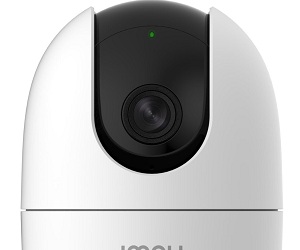If any value is a Google Spreadsheet is updated, this value can be sent to another software such as HubSpot CRM, etc. where it will be updated automatically.
Open Google Spreadsheet, click on menu Extensions. Then click on Apps Script to open Google Apps Script. It will open a code Editor named Code.gs. Add the following code with following editions,
1) At row 4, there is mentioned sheet1, replace it with worksheet name.
2) In row 6, there is mentioned columns to watch [1, 12]. It refers to columns from A to L, in spreadsheet, where A=1, B=2, C=3 etc.
3) In row number 21, there is mentioned total sheet columns with values, here is mentioned 12.
4) In row 38, there is mentioned URL_TO_SEND_DATA_AUTOMATICALLY where data needs to be sent automatically whenever a row is updated.
function editRow(e){
if(e.changeType=="EDIT" || e.changeType=="INSERT_ROW"){ //The type of change (EDIT, INSERT_ROW, INSERT_COLUMN, REMOVE_ROW, REMOVE_COLUMN, INSERT_GRID, REMOVE_GRID, FORMAT, or OTHER)
var spreadsheet = SpreadsheetApp.getActiveSpreadsheet(); //get activated Spreadsheet
var sheet = spreadsheet.getSheetByName("sheet1"); //get sheet by sheet name
var headings = sheet.getDataRange().offset(0, 0, 1).getValues()[0]; //get heading
var columnsToWatch = [1, 12];
var row = sheet.getActiveRange().getRow();
var column = sheet.getActiveRange().getColumn();
var values = sheet.getSheetValues(
row, // starting row
1, // starting column
1, // number of rows
12 // number of columns
);
var payload ={}
for (i = 0; i < headings.length; i++) {
var name = headings[i];
var value = values[0][i];
payload[name] = value;
}
payload["row_number"] = row;
var options = {
'method': 'post',
'contentType': 'application/json',
'payload': JSON.stringify(payload)
};
UrlFetchApp.fetch('URL_TO_SEND_DATA_AUTOMATICALLY', options);
}
}
After adding above Google Apps Script, in Apps Script left side menu, click on watch like icon named Triggers. Then click on Add Trigger. Add following values in different menus:
1) Choose which function to run : editRow
2) Choose which deployment should run : Head
3) Select event source : From spreadsheet
4) Select event type : On change
And then click on Save button.
After that click on Deploy and select New deployment. Now the Google Apps Script is ready to work.

Using Google Apps Script for automation can streamline workflows by eliminating repetitive tasks. Beyond sending updates to external software, Apps Script can be used to create custom notifications via email or integrate with other Google services like Calendar or Gmail. You can also automate data validation, ensuring that specific rules are followed in your spreadsheets. For instance, Apps Script can validate phone numbers, email addresses, or unique IDs before allowing data to be submitted. Additionally, you can schedule automatic reports by generating and sending periodic summaries to stakeholders using Google Sheets data. Integration with third-party APIs further enhances possibilities — from syncing data with customer relationship management (CRM) systems to monitoring inventory using an external database. Developers often use logging functions like Logger.log() to debug their scripts efficiently. Google Apps Script also supports creating custom menu items, allowing users to trigger scripts directly from the Sheets interface. If multiple scripts are in use, maintaining proper documentation with comments is crucial for long-term manageability. For more complex automations, using Apps Script libraries and external APIs can save time by reusing existing code. Overall, Google Apps Script empowers users to turn spreadsheets into powerful business tools with automated processes and real-time integrations.